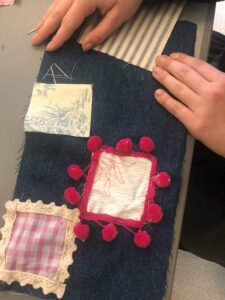Molly’s childhood was spent on her father’s hop farm in Bodiam, East Sussex, and she went to school in Hastings. Upon leaving school in 1933, she trained at Rachel McMillan College in Deptford as a nursery schoolteacher and spent six years there, first as a student and later as Head of the college’s nursery school.
With the outbreak of the war in 1939, she moved to Luton to be the head of a new nursery school, where she met her husband, Dr Noel Pearson, a local doctor. They were married in 1942 and came to live in Shaftesbury, Dorset. Molly’s husband was called for service in the RAMC and spent three years in India, before being demobilized, and on his return, they both settled permanently in Marnhull, Dorset.




